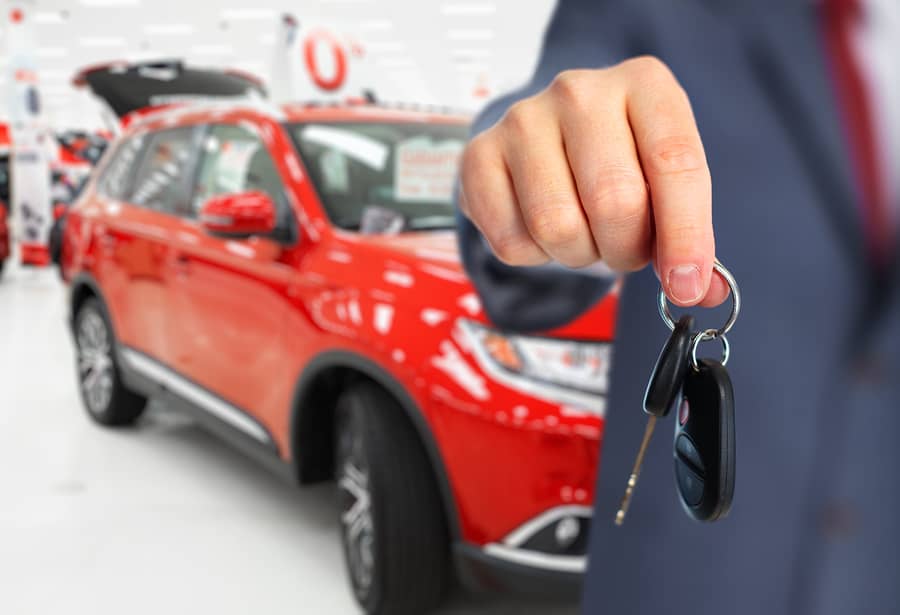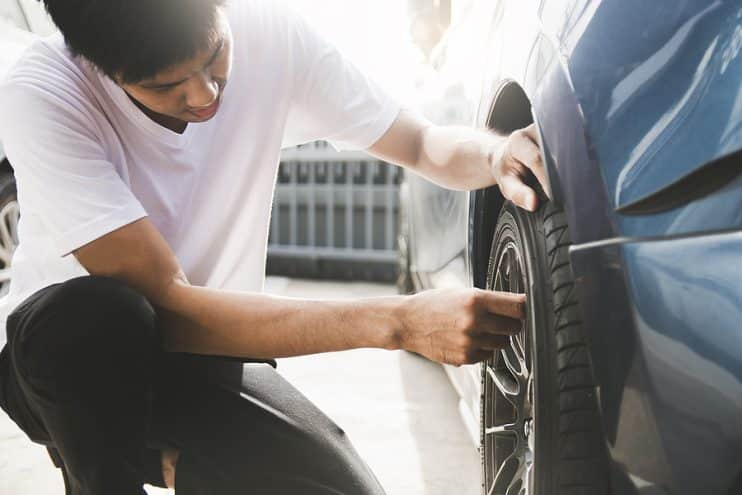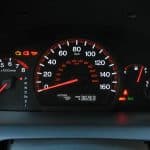
You’ve saved up the money. You know what you want. You might have even done a little research into the makes and models that most appeal to your needs and inner motorist. Let’s face it – buying a used car is a little bit exciting. But it can be stressful too.
Last thing you want to do is waste any hard-earned cash on a good-looking jalopy that turns out to be a right old pile of rust and bolts beneath the bonnet. So, you’ve scoured the papers and have visited a couple of dealer’s yards. Now for that moment of truth. It’s the test drive – and what should you be looking out for?
Table of contents:
- First checks
- Seats you sir
- You only drive twice
- Check it out
- I want to drive your car
- And a final note
First checks
Before you even get out on the road you might want to check your own insurance to ensure that you’re covered for a private sale test drive. Next up flick open the log book and check that the required service check history is in order.
And whilst the log book might tell a good story nothing beats the feel of the car out on the open road. After all, once you’ve paid for it, you are going to be stuck with it for a long time if it doesn’t quite hit the mark.

Seats you sir
Even if the reviews say the car you’re looking at buying is good for your height and weight, is it fine for you? Make sure of the following:
- Access – you can get in and out of the car quickly and easily without having to hold onto the bodywork.
- Movement – the seat and steering are adjustable to get that perfect position for long haul journeys.
- Visibility – you can see the instruments clearly and reach all the controls easily without straining.
- Reversing – practice reversing into a parking space or round a corner to check you have full visibility on all the blind spots.
- Children – take the young ones with you and make sure the back seats get their mark of approval for comfort.
- Child seats – bring these with you too and test out their suitability for fitting onto the seats in the vehicle.
- Luggage space – is there enough space for your shopping bags, golf clubs and pushchairs? Do the rear seats fold away easily to give you the space you need?
- Boot sill – is this low enough to allow for you to easily load and unload the car when you’re doing shopping and other tasks.
- Removeable seats – check that these work properly, using the owner’s permission and assistance if needs be.
You only drive twice
It’s best to test drive any car twice. The first time should be about getting a feel for the car and the drive quality. If you can then compare it to a similar model then you should be able to evaluate the real quality of the drive.
Anyone who is serious about selling you a car should not pressure you into purchasing off the first drive. Take about half an hour on all types of roads on any test drive before going off and doing a bit of research on known faults on the make and model.
With the second test drive try to take a mechanically minded friend with you who knows the danger signs and can listen to every rattle and knock on the road. You could even take the car to a trusted garage for a once over. For a small fee the AA or RAC will check the vehicle over.
Always make sure you start the car from cold. If the owner shows the car to you warm, there is a very good chance they are hiding something. And as a final point, watch out for tell-tale blue smoke, which is a sign there could be something seriously amiss with the engine.

Check it out
There are some very simple checks on any second-hand car that can be performed by even the most mechanical novices. These include:
- Tyres – check the depth on the tyre by inserting a 20p coin in the groove and ensuring that the tread covers the line of dots round the inside edge. Then take the car to a garage and check that the tyres are the right pressure or use a tyre pressure gauge that can be bought easily online.
- Brake discs – have a look at the brake discs if the car pulls to one side of flutters when you’re taking it for a test drive. Put the car up onto a jack and inspect the state of the brake discs. You should be suspicious of any uneven marks or rust.
- Fluid leaks – where has the car been parked? If you are at the owner’s house peek at the driveway. If there are fluid marks and oil this could well be indicative of problems within the lubrication or brake systems.
- Panel ripples – once a car has been in an accident many drivers claim it will never be quite the same again. One of the most obvious signs of a prang are ripples in the car’s panels – a tell-tale sign that the vehicle has been hit.
- Locking and doors – go around the car and give all the locks the once over, opening and shutting the doors. You want to see a smooth action where the lock clicks into place and the remote central locking secures the car.
- Lights and indicators – check the indicators with the hazard light switches, get out of the car to check the front and back lights and a friend will help you make sure the brake lights are functioning.
- Engine noise – when the car is idling listen to the noises coming from the engine. Any kind of knocking or banging sounds are a giveaway that something’s not quite right and you might be best off having the car properly checked by a mechanic.
- Rust on the bodywork – go around the extremities of the car and look underneath the visible edges to see if there is any rust. Use your fingers to feel out the rust rather than poking out holes or pulling pieces off the car. Excessive rust is a sign that there could be structural problems deeper in the vehicle’s chassis and frame.
- Test controls – everything in the car has automated controls these days, so make sure they work properly. From electric windows through to the sunroof controls, give the switches a quick flick and observe that smooth and continuous action. Or you may have problems with the motors.
- Odours – and of course, how does the car smell? Too much water through to children being sick; all these things can make a car smell particularly nasty and the smell is unlikely to go away with cleaning. Other smells, such as a sweet odour indicate problems with the clutch.
I want to drive your car
When it comes to the test drive make sure you’re the one behind the wheel. Don’t settle for a passenger ride round the block. You need to see the full performance of your prospective purpose out on the open road. When you’re in control of the car, try it on a variety of roads at different speeds. Be aware of the following signs:
- Steering wheel vibration – could be problems with the rack or the power steering unit. And even if it’s just down to the car’s age, do you really want to be holding onto a juddering wheel for long journeys?
- Suspension issues – when you go over bumps and potholes in the roads you will want to listen out for different knocks and groans in the suspension system. Anything you hear can be backed up with a quick test back at base when the car’s parked. Simply push on the bonnet and watch to see how quickly the car returns to position as an indicator of problems with the shocks and bushes. More than two bounces and you could be in trouble.
- Check gears – gear changes should be smooth and easy in a manual and the car should not lose speed or traction in an automatic. If these seems to be noises or problems changing gear then be very careful. Gearbox problems, particularly those with automatics, could cost you dearly.
- Acceleration – the vehicle should be able to handle rapid acceleration. Any difficulties getting the car moving are indicative of problems within the engine or turbo, both of which could be very expensive to repair or replace.
- Alignment – is the car pulling to one side as you drive? If so then it could be something as simple as the wheels not being correctly aligned, or in the worst case you could be looking at a twisted or damaged chassis.
- Brakes – test all the brakes in the car. Make sure that the handbrake doesn’t pull up much higher than the top click in its range and push the car to make a sharp halt with a fake emergency braking procedure. You should know the normal braking distances – in car lengths.
If the car fails any of these tests then get it checked by a mechanic. The last thing you want is more costs further on down the line.
And a final note…
Trust your gut. Do not listen to the seller. If something doesn’t feel right, sound right or look right then it’s not worth worrying about. There are thousands of deals and cars out there and life is too short to compromise on getting exactly what you want and then be disappointed for a long time to come.













.png)
Pingback: How to Replace Your Car’s Fuel Filter - BreakerLink Blog
Pingback: The How to Buy A Car On eBay Guide - BreakerLink Blog
Pingback: Don’t Get Sweet-Talked – How To Swerve Those Clever Car Selling Tactics - BreakerLink Blog